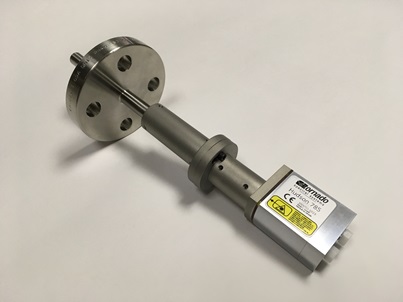
Getting to Grips with Process Sampling: Extractive and Remote Approaches
Once a process spectroscopy application has been identified and the required measurement type determined, the next crucial step is selecting the appropriate sampling method. Ideally, this decision should follow a systematic approach, but in reality, the process is complex— with multiple interconnected factors influencing the choice.
While the spectroscopic technique itself plays a role, the process and sample conditions often dictate the sampling method. Industrial plants are already established, with reactors that may be glass-lined and/or pressure-certified, making major modifications costly and impractical. Since process spectroscopy aims to optimize efficiency, minimizing downtime and avoiding unnecessary disruptions are key considerations.
Guiding Principle: Minimize Sample Disturbance
The less the sample is altered during measurement, the fewer artifacts are introduced, leading to more reliable data. For example, in on-line hydroxyl number determination using NIR spectroscopy, temperature fluctuations can significantly impact results. If a sample is removed from the bulk reaction mixture without proper temperature control, predicted values may vary wildly. When direct control isn’t possible, temperature variations must be accounted for in the calibration model.
Types of Sampling Methods
Sampling methods can be categorized based on their level of interaction with the sample, ranked from most desirable to least:
- Non-Contact Sampling – No direct interaction with the sample.
- In-situ Sampling – Probes enter the process but remain immersed in the product.
- Extractive Loop Sampling – A fast-loop system continuously extracts and returns the sample.
- Grab Sampling – Traditional manual sampling, often undesirable due to process disruption, possible hazards and time delays.
Non-Contact Sampling
Non-contact sampling is the ideal scenario, where the measurement occurs without physically disturbing the sample. While complete non-interaction is impossible, minimizing contact is the best practical approach.
Key Techniques:
- Raman Spectroscopy – Works well through sight glass windows, focusing laser energy directly into the reactor while avoiding interference from the glass itself.
- Reflectance NIR – Used for monitoring solid or powdered samples, such as drying processes in fluidized beds or conveyor systems.
- Mid-IR Spectroscopy – Effective for gas monitoring over long distances, such as emissions from scrubber systems or landfill sites.
- Visible Spectroscopy – Applied in fast-moving production environments, such as coatings on glass.
- Laser-Based Techniques – Methods like laser-induced fluorescence and frequency-modulated spectroscopy (FMS) allow remote gas monitoring, including headspace analysis in sealed vials.
Remote Sampling
Remote sampling involves probes in the process stream or reactor. Probes are commonly used for liquid-phase measurements and come in several designs:
Probe Types:
- Transmittance Probes – Light passes through a gap filled with sample
- Transflectance Probes – Similar to transmittance but with a mirror reflecting light back through the sample, effectively doubling the optical path length.
- Reflectance Probes – Used for powders, slurries, heterogeneous samples and fluidized beds, collecting diffusely reflected light.
- Raman Immersion Probes – Designed to collect 180° backscatter, focusing laser light into the sample while minimizing interference.
- ATR (Attenuated Total Reflection) Probes – Light interacts with the sample via an evanescent wave at the surface of a crystal of sapphire or diamond at the tip of a probe, inherently short pathlengths make ATR ideal for highly absorbing materials or concentrated solutions.
Material Considerations:
Process probes must withstand harsh conditions, often constructed from stainless steel, Hastelloy®, titanium, or even tantalum for durability. Window materials vary based on technique, with sapphire, quartz, and silica glass commonly used for optical transparency and chemical resistance.
Extractive Loop Sampling
Extractive loop sampling involves continuously withdrawing and returning a sample via a fast-loop system, allowing measurement without disrupting the main process.
Advantages:
- Enables probe isolation for maintenance without halting production.
- Allows the use of flow cells, which might otherwise obstruct the main process stream.
- Reduces extreme environmental conditions which may affect fibre optics and flow cells.
However, transporting a sample away from the main process can introduce spectral artifacts, requiring more complex data modeling. Additionally, changes in temperature, pressure, or shear forces may alter the sample’s physical state, potentially causing crystallization or solidification.
Grab Sampling: The Least Desirable Approach
Traditional grab sampling involves manually extracting a sample, analyzing it separately, and discarding the remainder. This method disrupts the process and risks altering the sample’s properties before measurement.
While grab sampling is generally avoided, near-line spectroscopy—where analysis occurs close to the process—can still provide significant advantages over traditional wet chemical methods in a remote lab, reducing analysis time and improving efficiency.
Conclusion
Selecting the right sampling method is critical for successful process spectroscopy implementation. While cost, engineering constraints, and existing plant infrastructure play a role, the sample itself should be the primary factor in determining the best approach. By minimizing sample disturbance and choosing the most suitable technique, industries can maximize efficiency and ensure reliable spectroscopic measurements.